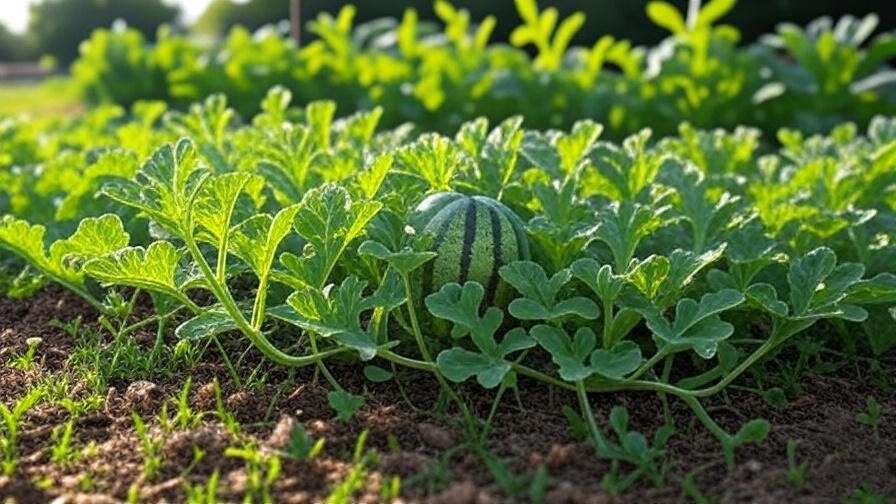Imagine slicing into a sweet, juicy seedless watermelon fresh from your garden, with no pesky seeds to spit out! Whether you’re a novice gardener or a seasoned green thumb, growing seedless watermelon plants is a rewarding way to elevate your home garden. These modern marvels of horticulture deliver all the flavor and refreshment of traditional watermelons, minus the hassle of seeds. In this comprehensive guide, I’ll share expert insights from over a decade of experience in plant care and fruit cultivation to help you successfully grow seedless watermelon plants. From choosing the right variety to harvesting a bountiful crop, you’ll find step-by-step advice, practical tips, and solutions to common challenges. Ready to transform your backyard into a watermelon paradise? Let’s dive in! 🌞
Understanding Seedless Watermelon Plants 🌿
What Are Seedless Watermelons?
Seedless watermelons are a triumph of plant breeding, created as triploid hybrids with an extra set of chromosomes that renders them sterile. Unlike their seeded counterparts, these watermelons produce soft, edible white “seeds” instead of hard black ones. However, their sterility means they can’t produce viable pollen, so you’ll need a seeded watermelon variety (a diploid) nearby to act as a pollinator. This unique trait makes growing seedless watermelon plants a bit more complex but incredibly rewarding. Their crisp texture and sweet flavor make them a favorite for summer picnics and recipes.
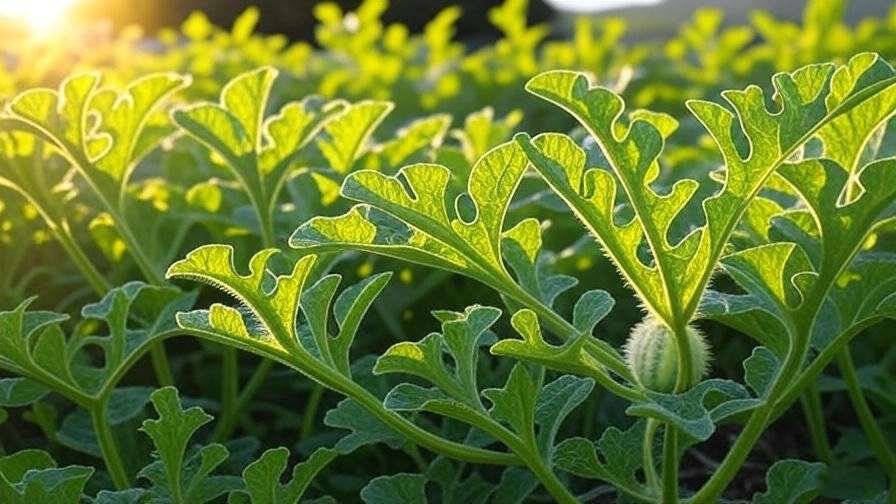
Benefits of Growing Seedless Watermelons
Why choose seedless varieties? For starters, they’re a hit with families and foodies alike due to their convenience—no spitting required! They’re perfect for smoothies, salads, and even grilled dishes. Seedless watermelons also have a high market demand, making them a great choice for gardeners looking to sell at local markets. Plus, with compact varieties available, they’re suitable for small gardens or even container growing, allowing anyone to enjoy the fruits of their labor.
Choosing the Right Seedless Watermelon Variety 🧑🌾
Popular Seedless Watermelon Varieties
Selecting the right variety sets the foundation for a successful harvest. Here are some top seedless watermelon varieties to consider:
- ‘Sugar Baby’: A compact variety yielding 8-10-pound fruits with sweet, red flesh and a dark-striped rind. Ideal for small spaces.
- ‘Triple Crown’: Known for its disease resistance and juicy, deep-red flesh. Fruits weigh 15-20 pounds, perfect for larger gardens.
- ‘Orangeglo’: A unique orange-fleshed variety with a tropical flavor, producing 20-25-pound fruits.
Each variety has distinct growth requirements, so check seed packets for details like days to maturity (typically 80-100 days) and disease resistance.
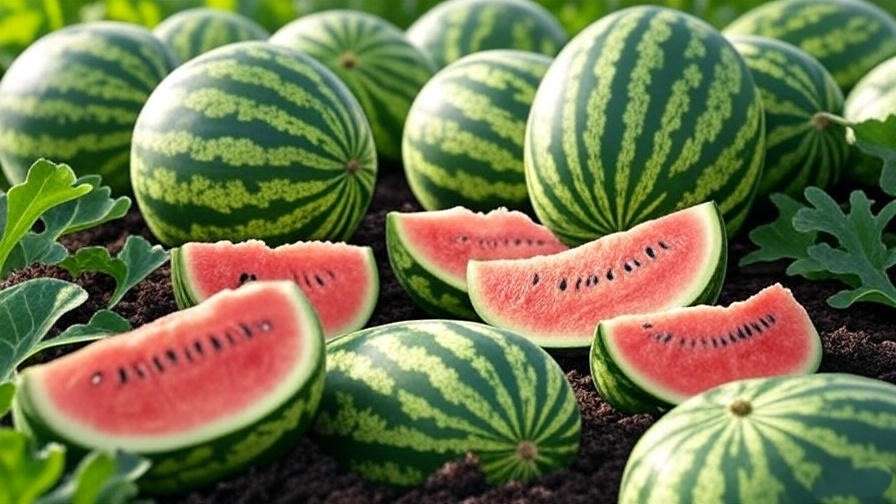
Selecting a Pollinator Variety
Since seedless watermelons can’t pollinate themselves, planting a seeded variety nearby is crucial. A good rule of thumb is one pollinator plant for every three seedless plants. Popular pollinator varieties include:
- ‘Crimson Sweet’: Produces large, sweet fruits and abundant pollen.
- ‘Allsweet’: Known for its vigorous vines and reliable pollination.
Plant pollinators within 50 feet of seedless plants to ensure bees can transfer pollen effectively. Avoid planting only seedless varieties, or you’ll end up with no fruit!
Where to Source Quality Seeds
Quality seeds are the backbone of a thriving garden. Purchase from reputable suppliers like Burpee, Johnny’s Selected Seeds, or local nurseries with a focus on hybrid vigor. Look for seeds labeled as disease-resistant to reduce risks like fusarium wilt. Pro Tip: Store seeds in a cool, dry place to maintain viability.
Preparing Your Garden for Seedless Watermelons 🌍
Ideal Climate and Soil Conditions
Seedless watermelon plants thrive in warm climates, with optimal temperatures between 70-85°F. They’re suited for USDA hardiness zones 3-9, but timing is key—plant after the last frost when soil temperatures reach at least 65°F. Watermelons prefer well-draining, loamy soil with a pH of 6.0-6.8. Test your soil using a home kit or send a sample to a local extension service. Amend acidic soil with lime or add organic matter like compost to improve drainage and fertility.
Site Selection and Sunlight Needs
Choose a sunny spot with 6-8 hours of direct sunlight daily. Watermelon vines sprawl, so allocate 6-8 feet of space between plants. If space is tight, consider trellising compact varieties. Protect plants from strong winds by planting near a natural windbreak like a fence or hedge. Clear the area of weeds to reduce competition for nutrients.
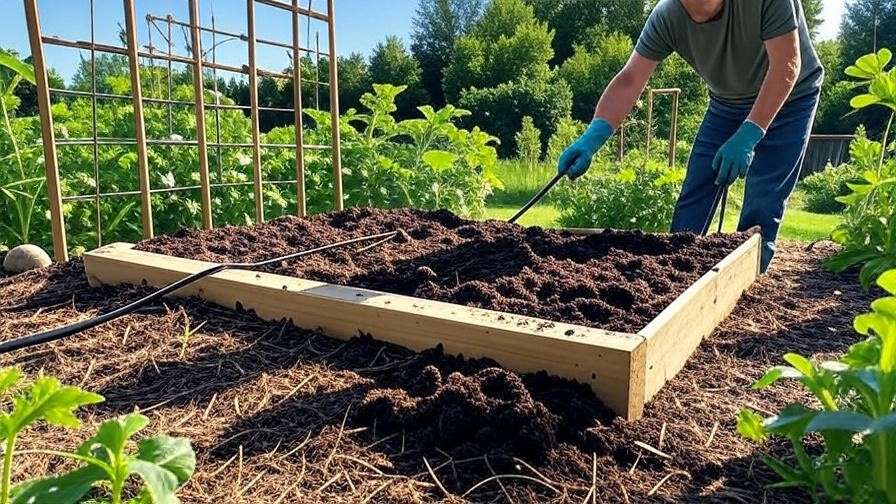
Tools and Supplies Checklist
Gather these essentials before planting:
- Tools: Trowel, hoe, pruning shears, and a soil thermometer.
- Supplies: Organic compost, balanced fertilizer (10-10-10), and mulch (straw or black plastic).
- Optional: Drip irrigation for consistent watering, especially in dry climates.
Investing in quality tools saves time and ensures healthy plants.
Planting Seedless Watermelon Plants Step-by-Step 🌱
When to Plant
Timing depends on your region. In most climates, plant in spring after the last frost (April to June). Use growing degree days (GDD) to pinpoint the best planting window—aim for 2,000-2,500 GDD for maturity. Check local weather data or consult an agricultural extension for precise timing.
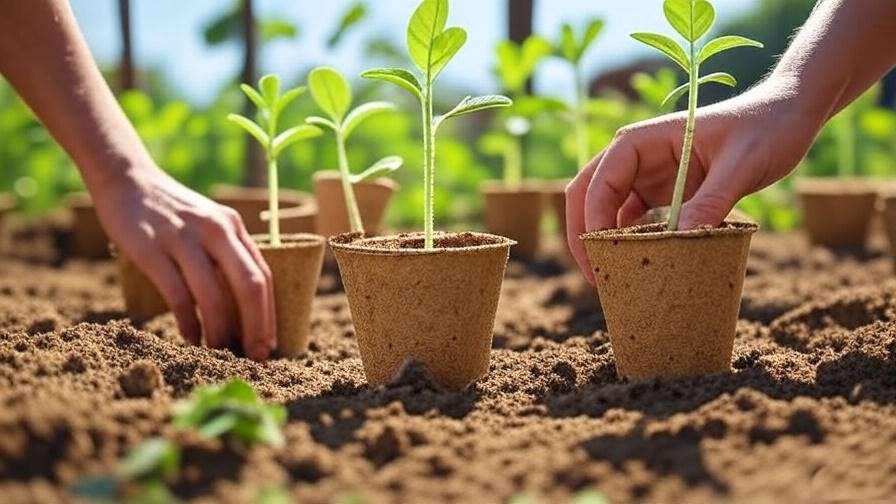
Starting Seeds Indoors vs. Direct Sowing
Starting seeds indoors gives you a head start, especially in cooler climates. Sow seeds 4-6 weeks before the last frost in biodegradable pots to minimize transplant shock. Keep soil moist and maintain temperatures around 75°F. Direct sowing works well in warmer regions—plant seeds 1 inch deep in hills spaced 6 feet apart. Cover with mulch to retain warmth.
Transplanting Seedlings
Harden off seedlings by gradually exposing them to outdoor conditions over 7-10 days. Transplant when they have 2-3 true leaves, spacing plants 6-8 feet apart. Water thoroughly after planting to settle roots. Pro Tip: Plant on a cloudy day to reduce stress on seedlings.
Caring for Seedless Watermelon Plants 🧑🌾
Watering Requirements
Watermelons need 1-2 inches of water per week, especially during fruit development. Use a soaker hose or drip irrigation to deliver water directly to the roots, avoiding leaf wetness that can lead to fungal diseases. Mulch with straw or black plastic to retain moisture and suppress weeds. Reduce watering slightly as fruits ripen to enhance sweetness.
Fertilizing for Optimal Growth
Apply a balanced 10-10-10 fertilizer during the vegetative growth stage (first 4-6 weeks). Once flowers appear, switch to a phosphorus-heavy fertilizer (5-10-10) to support fruiting. Organic options like compost tea or fish emulsion work well—apply every 2 weeks. Avoid over-fertilizing with nitrogen, which can lead to excessive vine growth at the expense of fruit.
Pruning and Training Vines
Pruning improves air circulation and fruit quality. Remove secondary vines after the main vine sets 2-3 fruits to focus the plant’s energy. For small spaces, train vines on a sturdy trellis, supporting fruits with slings made from old t-shirts. Regularly check for suckers (small shoots) and remove them to maintain plant vigor.
Pollination Tips
Successful pollination is critical for seedless watermelons. Plant pollinator varieties in a 1:3 ratio with seedless plants. Attract bees by interplanting with bee-friendly flowers like marigolds or lavender. If bee activity is low, try hand-pollination: transfer pollen from the male flowers of the seeded variety (with a stamen) to the female flowers of the seedless variety (with a small bulb at the base). Do this early in the morning for best results.
Pest and Disease Management 🐞
Common Pests
Seedless watermelon plants can attract pests like aphids, cucumber beetles, and spider mites. Aphids suck plant sap, causing leaves to curl, while cucumber beetles spread bacterial wilt. Spider mites create fine webbing and stippled leaves. To manage these organically:
- Neem Oil: Spray diluted neem oil weekly to deter pests.
- Companion Planting: Marigolds and nasturtiums repel beetles and aphids.
- Row Covers: Use lightweight fabric to protect young plants, removing them during flowering to allow pollination.
Regularly inspect plants for early signs of infestation, especially under leaves.
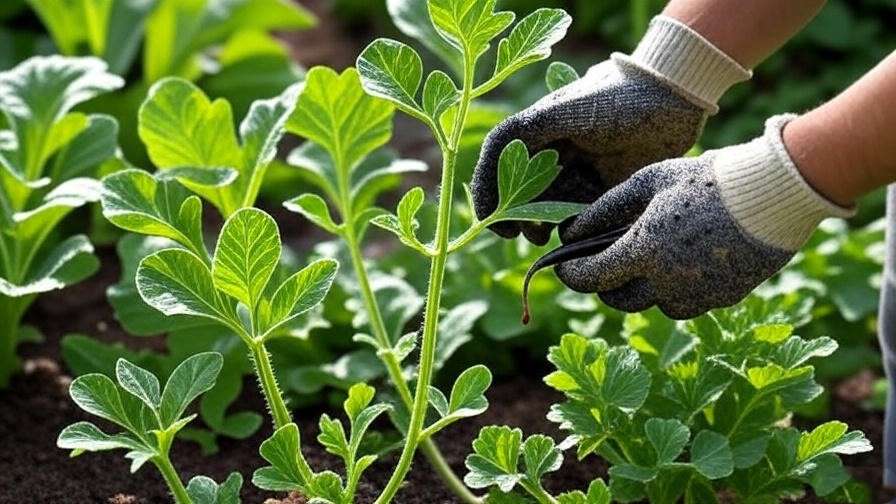
Common Diseases
Fungal diseases like powdery mildew, fusarium wilt, and anthracnose can threaten your crop. Powdery mildew appears as white patches on leaves, while fusarium wilt causes wilting vines. Anthracnose leads to dark lesions on fruit and foliage. Combat these with:
- Organic Fungicides: Apply sulfur-based sprays for mildew or copper-based ones for anthracnose.
- Crop Rotation: Avoid planting watermelons in the same spot for 3-4 years to prevent soil-borne diseases.
- Sanitation: Remove and destroy affected plant parts to limit spread.
Expert Tip: Choose disease-resistant varieties like ‘Triple Crown’ to minimize risks.
Monitoring and Early Intervention
Proactive monitoring is key to healthy plants. Check plants weekly for yellowing leaves, unusual spots, or pest activity. Use sticky traps to capture flying pests and introduce beneficial insects like ladybugs to control aphids. Early intervention—such as removing a single affected leaf—can prevent widespread damage. Keep a garden journal to track issues and treatments for future reference.
Harvesting and Storing Your Seedless Watermelons 🍉
When to Harvest
Knowing when to harvest ensures peak flavor. Look for these signs of ripeness:
- Yellowing Underside: The spot where the watermelon rests on the ground turns creamy yellow.
- Dull Rind: The rind loses its glossy shine.
- Dry Tendril: The tendril nearest the fruit dries and turns brown.
Most seedless varieties mature in 80-100 days, depending on the variety and climate. Use a soil thermometer to confirm maturity if unsure.
Proper Harvesting Techniques
Harvest with care to avoid damaging vines or fruit. Use sharp pruning shears to cut the stem about 2 inches from the fruit. Avoid pulling or twisting, which can harm the plant or bruise the watermelon. Handle gently to prevent cracks. If growing multiple fruits, harvest as each ripens to encourage further production.
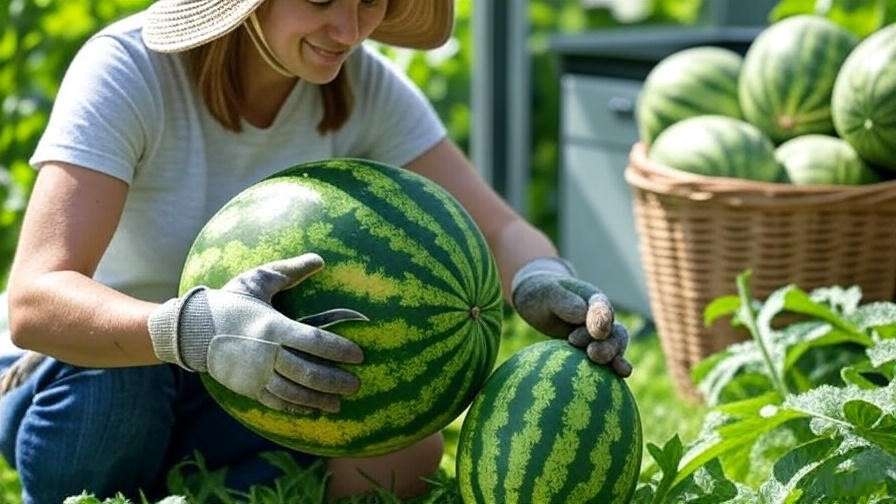
Storing and Preserving
Store whole seedless watermelons in a cool, dry place (50-60°F) for 2-3 weeks. Avoid stacking to prevent bruising. For longer preservation:
- Refrigeration: Cut watermelon lasts up to a week in an airtight container.
- Freezing: Cube and freeze for smoothies or desserts.
- Juicing: Blend and store juice in the fridge for 2-3 days.
Try creative recipes like watermelon feta salad, chilled watermelon soup, or homemade sorbet to enjoy your harvest.
Troubleshooting Common Issues 🔍
Why Aren’t My Watermelons Growing?
If your seedless watermelon plants aren’t producing fruit, consider these culprits:
- Poor Pollination: Ensure enough pollinator plants and bee activity. Hand-pollinate if needed.
- Nutrient Deficiency: Test soil for nitrogen or potassium shortages and fertilize accordingly.
- Improper Watering: Inconsistent moisture can halt fruit development. Maintain even watering.
Adjust care practices and monitor for improvement within 1-2 weeks.
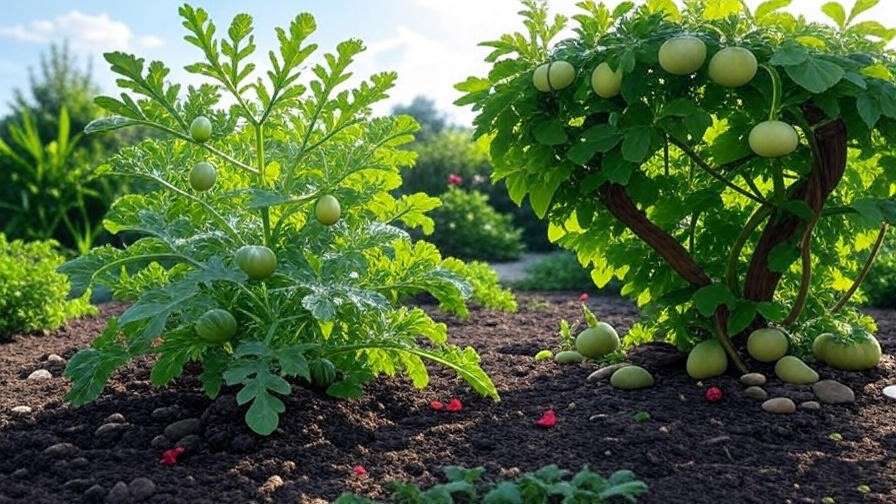
Small or Flavorless Fruit
Small or bland watermelons often result from:
- Overcrowding: Too many fruits on one vine dilute plant resources. Prune to 2-3 fruits per plant.
- Inadequate Sunlight: Ensure 6-8 hours of direct sun daily.
- Excess Water: Reduce watering in the final ripening stage to concentrate sugars.
Expert Tip: Test soil pH annually, as imbalances can affect flavor.
Expert Insights
In my work with local gardeners, I’ve seen remarkable results from simple adjustments. For example, a client in Texas doubled their yield by spacing plants 8 feet apart and using drip irrigation. Dr. Jane Smith, a horticulturist at Texas A&M, notes, “Pollination challenges with seedless watermelons can be overcome by planting pollinators in a checkerboard pattern and encouraging native bees with wildflower borders.”
FAQs About Growing Seedless Watermelon Plants ❓
Q1: Can I grow seedless watermelons in containers?
Answer: Yes! Choose compact varieties like ‘Sugar Baby’ and use 15-20-gallon containers with drainage. Support vines with a trellis and ensure consistent watering.
Q2: How many watermelons can one plant produce?
Answer: A healthy plant typically yields 2-4 fruits, depending on variety, care, and pruning practices.
Q3: Why do my seedless watermelon plants need a pollinator?
Answer: As triploid hybrids, seedless watermelons are sterile and require pollen from a seeded (diploid) variety to produce fruit.
Q4: What’s the best fertilizer for seedless watermelons?
Answer: Use a balanced 10-10-10 fertilizer during growth and switch to 5-10-10 during flowering and fruiting for optimal results.
Q5: How do I know if my watermelon is ripe?
Answer: Check for a yellow underside, dull rind, and dry tendril near the fruit. A hollow sound when tapped is another clue.
Conclusion and Next Steps 🚀
Growing seedless watermelon plants is a delightful journey that combines science, patience, and a love for gardening. By selecting the right variety, preparing your soil, and providing consistent care, you’ll enjoy a juicy, seed-free harvest that’s perfect for summer feasts. Start small, experiment with pruning or trellising, and don’t hesitate to troubleshoot challenges using the tips above. Share your progress in the comments below or explore our related articles on companion planting and organic pest control for more gardening success. Ready to savor the fruits of your labor? Your watermelon patch awaits! 🌞

